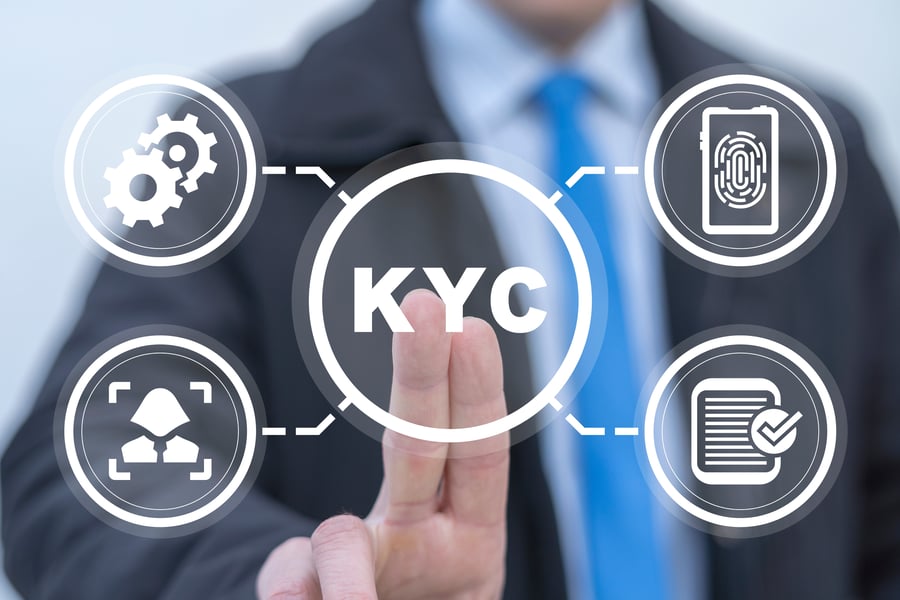With 22 years of experience at Creditsafe in the UK and USA, Michelle is a seasoned professional who thrives in our dynamic environment of evolving data, technology, and solutions. She particularly relishes the opportunity to work closely with customers, as evidenced by the numerous glowing references she has earned throughout her career.
AI has become integral to doing business today.
It simplifies and speeds up manual tasks. It analyzes large amounts of data that humans struggle with and uncovers patterns and insights about your financial health, cash flow, income and revenue growth.
But if you ask certain people, they might tell you that AI itself is the crisis we should be building resiliency against. After all, don’t sci-fi films tell us to run and hide from the evil robots, don’t they?
Luckily, in 2023, that narrative is losing steam. This is, in part, due to the events of the pandemic, when companies could no longer do things the way they had always done before. Tech, automation and AI became saving graces and helped most companies stay afloat and be more resilient.
So, it’s no wonder companies are investing more in digital transformation. According to Accenture, AI was a top priority over all other digital investments for 73% of companies, with a specific focus on tackling operational resilience.
Even though business leaders might recognize the value of AI on the bottom line, that doesn’t mean the finance department sees AI in a similar light. As our recent study on AI’s role in business risk reveals, most finance teams don’t see the true value and ROI that can be gained from AI with 63% saying a lack of automation creates little to no risk for their business.
On the surface, you might look at this finding and think that finance teams are confident in their ability to wrangle the necessary data to make the right decisions. But we can’t help but wonder if this confidence isn’t based in reality and is just wishful thinking.
It's also likely that finance managers simply don’t have a full understanding of AI use cases in finance. So, let’s explore some of the main use cases of AI in finance and how it can make your business more resilient.
See how much you could save by automating your credit decision process
Know Your Customer (KYC) and ID verification
As a business, you deal with a lot of different people – from customers to investors to partners and suppliers. But the reality is that corporate fraud happens more often than you realize. According to the 2020 Report to the Nations on Occupational Fraud and Abuse, companies worldwide lose an estimated 5% of their annual revenues due to corporate fraud. Plus, approximately 80% of these cases are committed by individuals within the company itself.
So, you can’t just take someone’s word for it when they say they’re a director of a company. You need to do your due diligence and run Know Your Company (KYC) / ID verification checks. Otherwise, your business could end up losing a lot of money if you send payment to a scammer or criminal. That’s not something you want to happen, especially with a recession looming, rising inflation and increased operating costs.
So, how can AI help streamline this ID verification process and give you peace of mind that you won’t fall victim to corporate fraud? Instead of calling up agencies and references to run these checks manually, check that a company or director is legitimate by using a digital KYC / ID verification tool that:
- Uses biometric facial recognition technology to confirm the real-time selfie matches the image on the official ID document
- Uses passive liveness technology to detect the presence of a live person
- Takes a photo of the ID document in real-time and verifies that it’s valid and genuine

Matching demand and supply
You won’t know what inventory (and the right quantities) to order or be able to make accurate sales projections unless you fully understand the demand for those items. This is especially true for industries that manufacture physical goods and rely on suppliers to deliver those goods to customers.
This is where data will be your best friend. You’ll need to sift through large data sets to analyze past sales performance and customer demand, make reliable sales forecasts and manage your inventory needs effectively. That’s a lot of data and doing it all manually just isn’t realistic. Plus, it could take a long time to analyze all that data and you might end up with skewed analysis if any data is inaccurate or missing.
Thankfully, AI can do a lot of the analytical work for you. It doesn’t just look at your current data – it can sift through several years of past data to identify patterns and trends that will help you decide what inventory to order, when to order it and how much to order so you can meet (or exceed) your sales projections. This is a perfect example of how AI can make your business more resilient.

Automating back-office tasks
For anyone who works in a finance/accounting role, you know all too well that there can be quite a large amount of back-office tasks that end up taking a lot of time out of your day. Usually these tasks aren’t very strategic, but they still need to get done. These can include ordering new business credit cards, processing vendor invoices, following up on collections and issuing refunds to customers.
AI can be tremendously useful and a time saver with these tasks. So, if you typically spend 10 to 15 hours each week on these types of tasks, you could end up saving 520 to 780 hours a year if you hand these monotonous tasks over to AI (i.e. cognitive assistant) or at least use AI to automate the processes.
Cash flow forecasting
It seems like everywhere I look these days, all I hear about is another company going bankrupt. Bed Bath & Beyond, Party City, Revlon and Yellow are just a few of the companies that found themselves in financial trouble recently.
I can see why this is the case. One of our recent studies found that over half (56%) of businesses expect to incur over $100,000 in debt in 2023, with 18% expecting their debt to exceed $1 million. On top of this, more than two-thirds (67%) of businesses expect borrowing costs to increase this year. With so much financial pressure, cash flow forecasting is obviously going to be vital if businesses want to survive the recession and thrive long-term.
So my question to you is – how confident are you that your team can do cash flow forecasting accurately without the help of AI to analyze various data sets? If you answer ‘not very confident,’ that’s perfectly alright.
AI should be a value-add, not a replacement of you. It'll help you understand the different factors that affect your cash flow so you can make smarter decisions that benefit your business. And when you do that, it’ll showcase you as a strategic contributor to the business, rather than perpetuating the age-old stereotype of finance professionals being ‘number crunchers.’ Isn’t that what you want?

Speeding up and improving the accuracy of credit decisions
Sales teams work hard to prospect, engage and convert leads into new business. Of course, they do. It’s their job and affects how much they get paid in commission. So, you can imagine how frustrating it can be if a salesperson works for months to close a deal and then have it rejected by the finance team in the 11th hour.
The truth is, this happens more often than you’d expect. A recent Creditsafe study found that almost half (47%) of sales professionals have up to 10 sales deals rejected each month by the finance team. Plus, another 13% said they have between 11 and 15 sales deals rejected.
And we recently surveyed finance managers to get a better picture of their B2B credit decision process.
Here’s what we found:
- 97% of finance managers process up to 100 credit applications a day.
- For 63% of businesses, it takes up to 5 people to make credit decisions on new customers. Meanwhile, 22% of companies involve 6-10 people and 14% of companies involve over 10 people in the process.
- 75% of finance managers said it can take up to a full day (8 hours) to reach a credit decision on a single customer. Plus, 16% said it can take one to two days to reach a decision and 10% said it can take over three days.
Why am I telling you these stats? I want you to see just how tedious and time-consuming it can be to run manual credit checks on customers, especially for companies that are larger and could end up processing even more credit applications. Now consider this: Our recent study on AI’s role in business risk found it can take up to 10 people and between one to three days to reach a credit decision for each customer. Plus, 56% say that over half of their weekly credit decisions require in-depth analysis.
Rather than doing the whole process manually, wouldn’t you rather save a lot of time and thousands of dollars by building automated workflows based on your credit policies and using a digital tool to help you quickly check and decide which customers are worthy of extending credit to and which customers would be too much of a liability? That’ll free up your time to then focus on those credit applications that require in-depth analysis.
That’s the beauty of using AI to automate your credit decisioning. Not only will you save more time and money in the process, but you’ll also be able to do a better job of detecting and protecting your company from financial risks. So, you’ll become a valuable asset to both your finance team and to your company.
The morale of the story is that business resilience is safe in the hands of AI. It’s more than safe – businesses can protect their cash flow, better forecast sales and increase revenue growth.

About the Author
Michelle Regan-Zamora